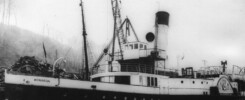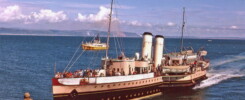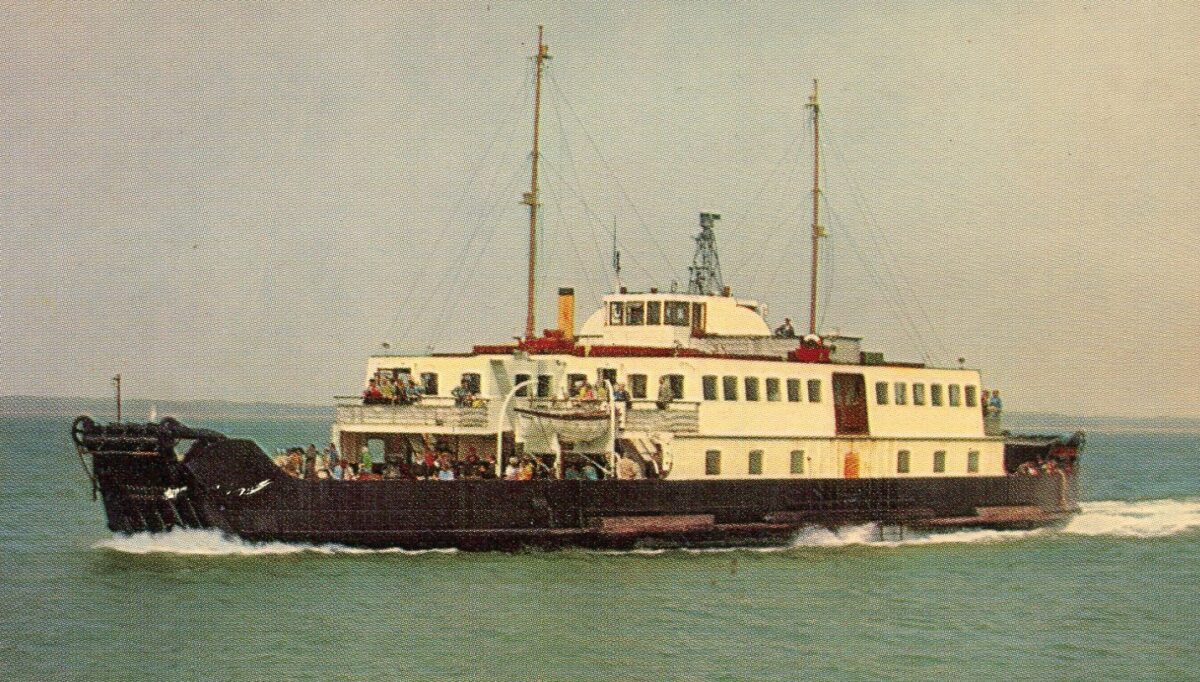
The Diesel electric paddler Farringford was launched at the shipyard of Denny of Dumbarton on the Clyde on Friday 21st March 1947 for the Southern Railway’s Isle of Wight ferry service between Lymington and Yarmouth.
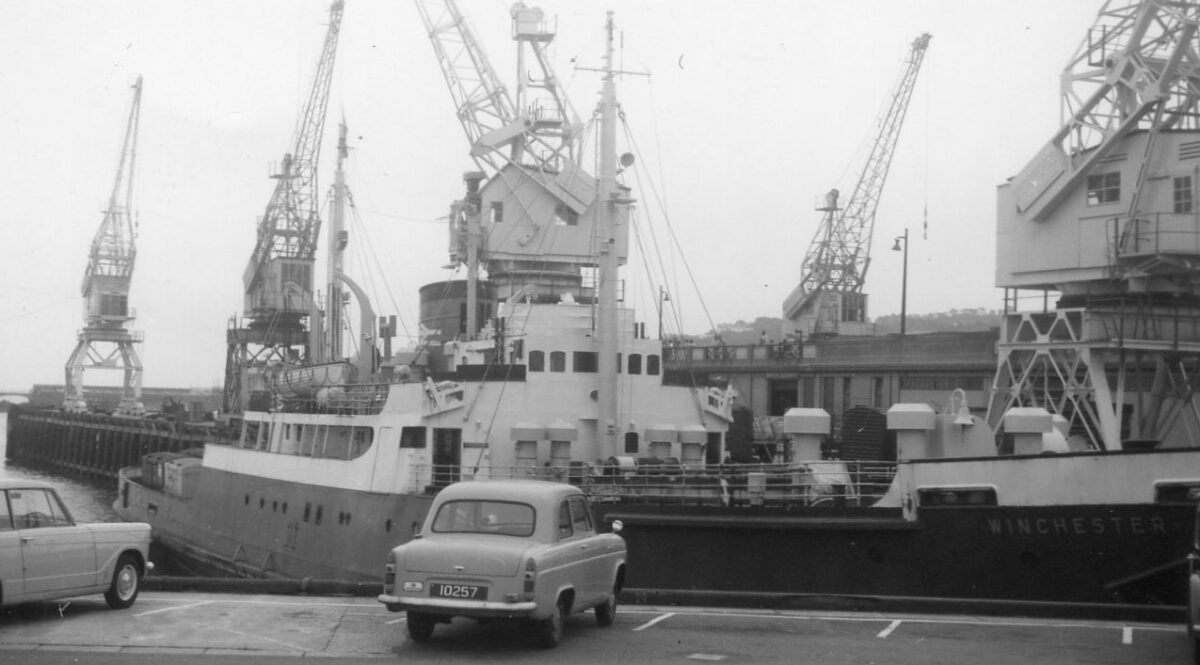
Launched on the same day by Denny, and also being built for the Southern Railway, was the Winchester which was intended for cargo work and up to 12 passengers on the railway’s Channel Islands and St Malo services from Southampton.
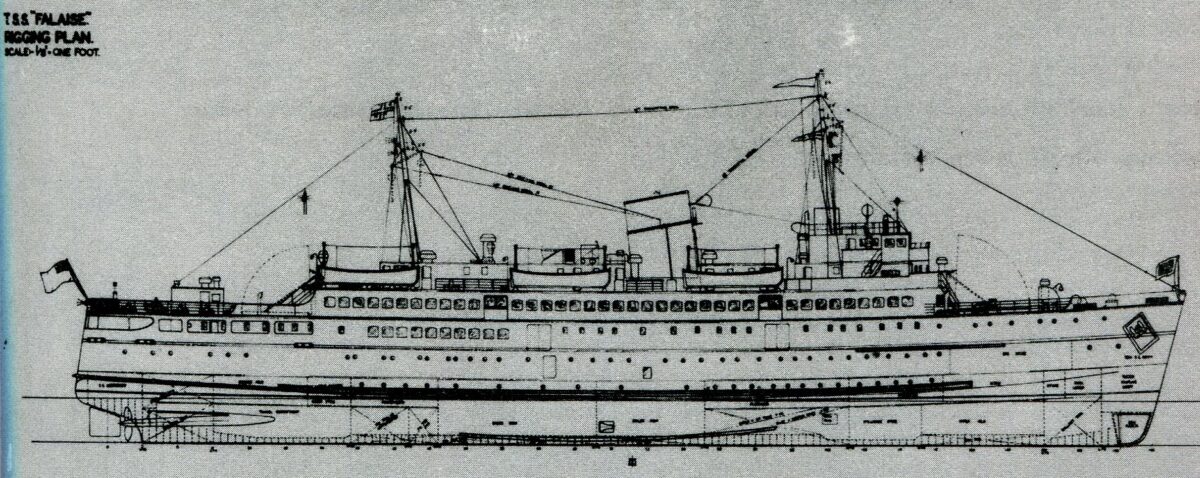
After launching the two ships joined the Falaise in the fitting out basins. She was also being built for the Southern Railway for their Southampton/St Malo service and had been launched on Friday 25th October 1946 but was still at the Dumbarton yard in March 1947 with work continuing to complete her. So that’s three new and very different ships being built for the Southern Railway at the same time in the same Clyde shipyard.
Discussions about post war new builds of ships for the railways originated as early as 1943 with a provisional list drawn up and submitted to Government of the sorts of ships which might be required after the war both to replace war losses and ageing tonnage. The original idea for a new Lymington/Yarmouth car and passenger ferry, ostensibly to replace the paddle steamer Solent, was for an enhanced and larger version of the Lymington which had been built by Denny for the route in 1938 with the then very novel Voith Schneider propulsion . However fitting the new ship with Voith Schneider was not looking likely in the aftermath of the war as the Austrian factory where these propulsion systems and propellers were made was still in ruins following heavy allied bombing.
On the way up to Glasgow to discuss options for the new Isle of Wight ferry with Denny one of the Southern Railway group, Leslie Harrington, suggested that they should have a clearer idea of what they wanted before the meeting. So on the train Leslie sketched out what was to become the Farringford on the back of an envelope. At the meeting Sir Maurice Denny confirmed the unavailability of Voith Schneider propellers and suggested instead a ship with independently operated paddle wheels like those run by Denny in association with the railway on the Firth of Forth. A trip on one of them was arranged and the Southern Railway delegates were suitably impressed by the tremendous manoeuvrability which independent paddle wheels give to a ship as demonstrated by Captain Jeffries, the Marine Assistant, taking the wheel and weaving in and out of the arches of the Forth Bridge much to the amazement of passengers. So that was that. Farringford was to be built with three Diesel generators to supply the electricity for the two independent electric motors which drove each paddle wheel separately.
First away from Denny’s yard was the Falaise which sailed south to start her new career as a cross channel ferry on Sunday 8th June 1947. Second away was Winchester which set off from Dumbarton on Thursday 6th November. Although the smallest and therefore in theory the quickest to build, Farringford had to wait until Friday 23rd January 1948 before she too was ready to leave for Southampton.
The weather was not kind to her on her voyage south which took two weeks to complete where in fine weather it could have been done in two days. She also sustained some damage from the heavy seas she encountered on the way which required repairs in the railway works at Southampton.
In the end it was not until Friday 27th February 1948 that the press was invited for an inaugural cruise on Southampton Water to view the splendours of the new Isle of Wight ferry Farringford under the command of Captain Woolgar.
Kingswear Castle returned to service in 2023 after the first part of a major rebuild which is designed to set her up for the next 25 years running on the River Dart. The Paddle Steamer Kingswear Castle Trust is now fund raising for the second phase of the rebuild. You can read more about the rebuilds and how you can help if you can here.
John Megoran
This article was first published on 21st March 2021.

